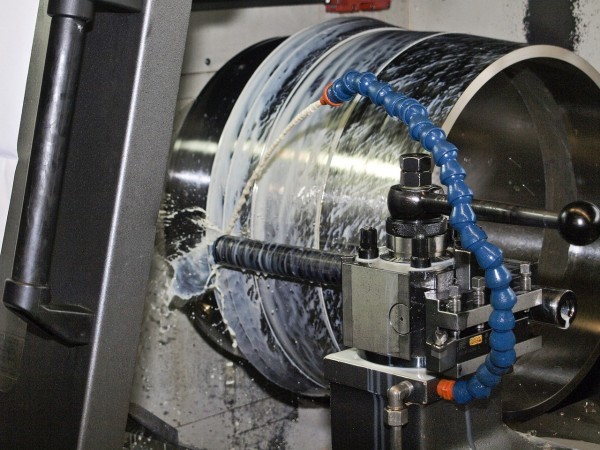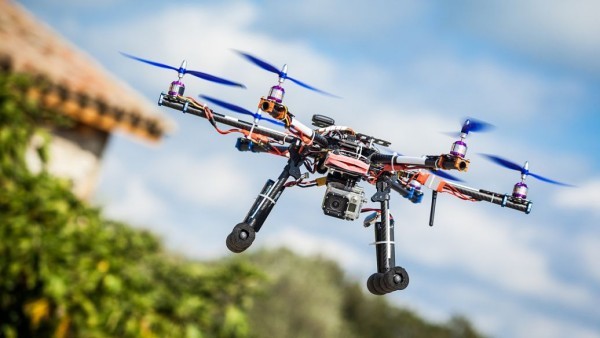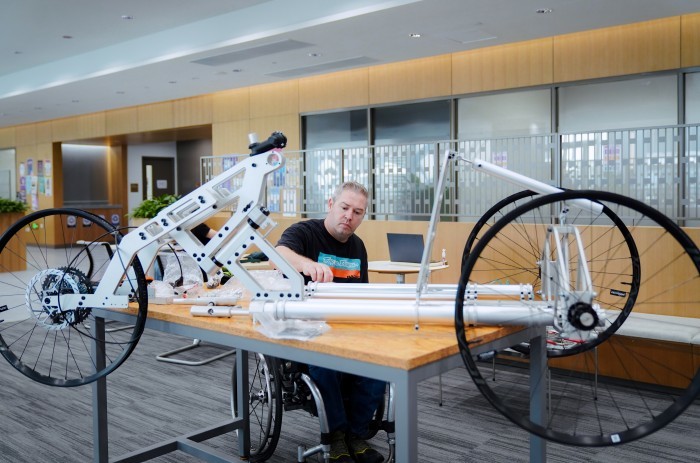Resources
Resources
Mastering Robot Parts CNC Machining: Aluminum Vs Stainless Steel: Selecting the Appropriate Material for Robot Parts
Introduction
CNC machining can be an intensely competitive industry. When fabricating precision robot parts, choosing materials plays a pivotal role. Manufacturers such as Shenzhen Yixin Precision must balance weight, durability, cost and machinability when choosing between aluminum and stainless steel when selecting their material choice for robot chassis to joint flanges fabricated using CNC. This article explores both materials thoroughly while offering actionable insights for selecting robot parts CNC material options as well as detailing robot CNC machining nuances.
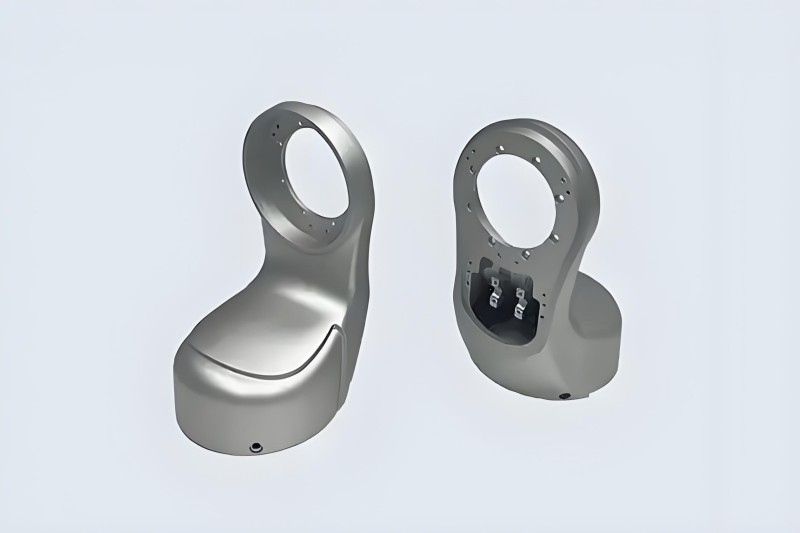
Why Material Selection Matters
Selecting the proper material for robot parts is more than a technical decision; it impacts performance, safety, and long-term reliability of the final product. Critical factors to keep in mind include:
- Weight and Strength: Lightweight materials such as aluminum can significantly reduce overall weight, improving mobility and energy efficiency, while at the same time load-bearing components like robot joint flanges require superior strength to withstand their loads.
- Corrosion Resistance: Robots must operate in challenging environments. Stainless steel offers excellent corrosion resistance, making it the ideal material to use in harsh or moisture-rich settings.
- Machinability & Production Efficiency: Machinability plays an essential role in production time and costs, with aluminum's excellent machinability making CNC robotic part machining faster cycle times possible.
- Thermal Conductivity: Robotics applications requiring high speeds or performance demand the ability to dissipate heat quickly are crucial, while this aspect must also be carefully managed in terms of thermal conductivity.
- Cost Implications: Material costs and associated machining processes should be carefully evaluated against their performance benefits.
Understanding these factors is crucial to making informed decisions when selecting materials for robot parts. mes Aluminium for Robot Parts:
Advantages and Drawbacks Advantages of Aluminum
Advantages of Aluminum
- Lightweight Nature and High Strength-to-Weight Ratio
Aluminum is renowned for being significantly lighter than stainless steel. This makes it a popular choice for applications where reducing weight is crucial—such as in robot chassis or robotic arms. A lower weight contributes to better energy efficiency and increased maneuverability without sacrificing structural integrity.
- Superior Machinability
In the realm of robot parts CNC machining, aluminum stands out due to its excellent machinability. Its softness allows for faster cutting speeds and reduced wear on machining tools, leading to shorter production cycles and lower overall manufacturing costs.
- Adequate Corrosion Resistance
Although not as resistant as stainless steel, aluminum naturally forms an oxide layer that protects against further oxidation. In controlled environments with minimal exposure to corrosive agents, aluminum remains a viable option.
- Effective Thermal & Electrical Conductivity
Aluminum’s ability to conduct heat efficiently is advantageous in designs where heat dissipation is critical. This can be especially important in high-speed robots or in components where temperature regulation is essential.

Drawbacks of Aluminum
- Lower Hardness and Wear Resistance:
Compared to stainless steel, aluminum can be more susceptible to wear and abrasion. In applications where components are subject to constant friction, aluminum may experience faster degradation.
- Limited Performance Under Extreme Conditions:
Aluminum may not perform as reliably in high-temperature environments or in situations involving heavy loads. This limitation makes it less suitable for certain critical load-bearing parts.
Stainless Steel for Robot Parts: Strengths and Limitations
Advantages of Stainless Steel
- Exceptional Strength and Durability
Stainless steel is highly valued for its robustness. Its superior mechanical properties make it the material of choice for parts that require high load-bearing capacity, such as robot joint flanges and industrial robot chassis. The durability of stainless steel ensures that components can withstand substantial stress and strain over extended periods.
- Unmatched Corrosion Resistance
One of the most significant advantages of stainless steel is its exceptional resistance to corrosion and rust. This property is indispensable for robots operating in harsh or corrosive environments—such as marine robotics, outdoor industrial settings, or even medical applications.
- Enhanced Wear Resistance
Due to its higher hardness, stainless steel offers better resistance to wear and surface damage. This quality is critical for components that are in constant motion or friction, ensuring longevity and sustained performance.
- High-Temperature Stability
Unlike aluminum, stainless steel retains its strength and structural integrity at elevated temperatures. This makes it the preferred material for robots used in high-heat applications or environments where thermal stress is a concern.
Limitations of Stainless Steel
- Higher Density and Weight:
The greater mass of stainless steel can be a disadvantage in applications where minimizing weight is essential. This increased weight may affect the overall energy efficiency and agility of the robot.
- Challenging Machinability:
Stainless steel is more difficult to machine than aluminum. The increased hardness requires specialized tooling and can extend cycle times in robot parts CNC machining, ultimately raising production costs.
- Lower Thermal Conductivity:
While stainless steel excels in strength, its ability to dissipate heat is less efficient compared to aluminum. This could be a drawback in applications where managing heat is critical.
Comparative Analysis: Aluminum vs Stainless Steel For A side-by-side comparison of aluminum and stainless steel for robot parts offers clarity on which material is best suited for specific applications:
|
Criteria |
Aluminum |
Stainless Steel |
|
Weight |
Lightweight; enhances mobility |
Heavier; can affect energy efficiency |
|
Strength |
Good strength-to-weight ratio |
Superior mechanical strength and durability |
|
Machinability |
Excellent; reduces CNC machining time |
Challenging; requires more time and specialized tools |
|
Corrosion Resistance |
Adequate in controlled environments |
Exceptional; ideal for harsh or corrosive environments |
|
Thermal Conductivity |
High; beneficial for heat dissipation |
Lower; may require additional cooling solutions |
|
Cost |
Lower production and machining costs |
Higher production costs due to complex machining |
This table serves as a quick reference for engineers and procurement specialists responsible for material selection for robot parts. Ultimately, the choice between aluminum and stainless steel depends on the requirements and operating conditions for each robot design and operating condition.
Application Scenarios and Recommendations
1.Robot Chassis and Robotic Arms
- Aluminum is often the go-to material for robot chassis and arms that must reduce weight, due to its superior machinability and cost-effectiveness. Aluminum's lightness also makes it suitable for high speed production applications with rapid production requirements. o
- Stainless Steel can be utilized in heavy-duty industrial applications due to its greater strength and durability, offsetting its additional weight by being suitable for robot joint flanges and load-bearing components.
2.Robot Joint Flanges and Load-Bearing Components
Components like robot joint flanges require materials that can withstand repeated mechanical stress, with stainless steel typically taking the lead due to its high tensile strength and wear resistance. o
Where weight is an important consideration but load-bearing capacity must still be ensured, advanced aluminum alloys with increased strength may be an appropriate solution.
3.Precision CNC Machining Requirements
Aluminum's ease of machining offers significant advantages for parts that require intricate detailing and high precision, with faster cycle times and lower tool wear contributing to overall production efficiency.
When precision is essential and components must remain functional over their lifespan, stainless steel's robust nature may justify an increase in machining complexity.
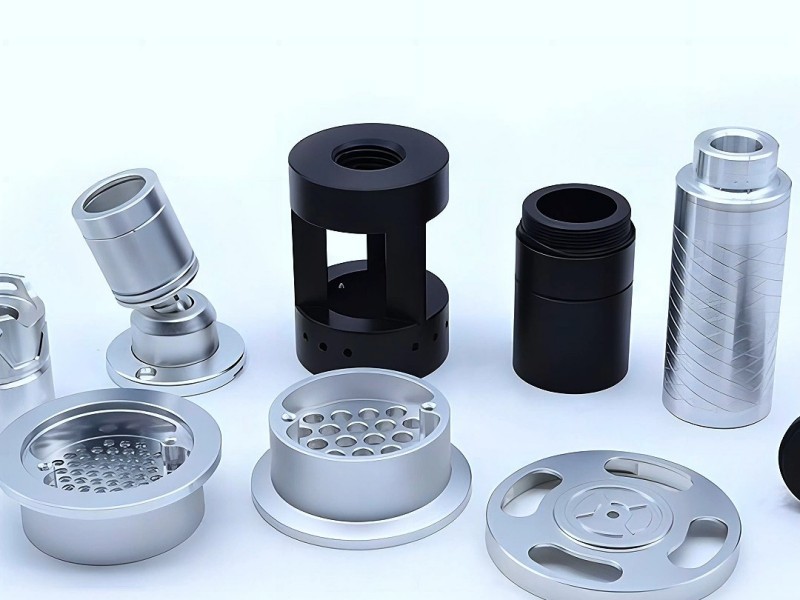
Considerations in Robot Parts CNC Machining
CNC machining plays a critical role in determining the final quality of robot parts, so its impact must not be overlooked. Some key considerations of this process are:
1.Tool Wear and Maintenance:
Machining stainless steel can cause increased tool wear due to its hardness. This leads to higher maintenance costs and longer downtimes, while aluminum's softer nature extends tool life, leading to greater productivity for robot parts CNC machining.
2.Precision and Tolerance:
Acquiring tight tolerances is of utmost importance in robot components, particularly joints flanges. Both materials require different approaches when it comes to milling to achieve similar precision levels; advanced CNC machines with real-time monitoring systems can mitigate issues related to either material.
3.Surface Finishing:
Post-machining surface treatments are an integral component of success. Aluminum may undergo anodizing to improve corrosion resistance and aesthetic appeal; for stainless steel products, polishing or passivation might provide a smooth rust-resistant finish.
4.Heat Management:
Machining processes generate heat that must be managed effectively to avoid damaging machinery. Aluminum's high thermal conductivity helps disperse it quickly while stainless steel requires more advanced cooling solutions during CNC machining processes.
Innovations in Material Science and CNC Machining
Advancements in material science have seen the creation of aluminum alloys and stainless steel grades tailored specifically for CNC applications, offering improved strength, corrosion resistance, and optimized machinability properties that manufacturers are increasingly adopting to meet growing demand for high-performance robot parts.
CNC machining technology has rapidly advanced over time with features like automated tool changers, real-time monitoring systems and sophisticated software algorithms, offering more precise control of the machining process while reducing production errors and further refining final product quality for both aluminum and stainless steel components.

Future Trends in Robot Material Selection
As robotics technology develops, so will material selection criteria. Some key trends to keep an eye on:
Hybrid Materials:
Combinations of aluminum and stainless steel materials in an assembly may provide an advantageous balance. For instance, lightweight aluminum components could be reinforced by stainless steel reinforcement elements where durability is key.
Sustainability:
Environmental considerations have become ever more paramount, and materials that promote sustainability with lower energy needs during production and increased recyclability are rapidly growing in popularity.
Customization Through Advanced Alloys:
Continued research in metallurgy is yielding advanced alloys designed specifically to meet high precision applications, which may provide better performances during robot parts CNC machining thereby further optimizing cost and efficiency.
Conclusion
Selecting aluminum or stainless steel as the material of choice for robot parts involves multiple considerations. Aluminum excels when lightweight design, rapid production, and cost efficiency are top priorities; particularly in applications requiring CNC machining of robot chassis components. On the other hand, when strength, durability, and corrosion resistance are vital (particularly load bearing elements such as joint flanges), stainless steel provides more reliable solutions.
Material Selection for Robot Parts,Robot Parts,Robot Parts CNC Machining,robot materials,robot chassis,Robot joint flang,CNC Machining
Related News
2025-04-24
Privacy Disclosure and Data Protection
In Yixin Precision Metal and Plastic Ltd., we prioritize the protection of our customers' and visitors' privacy. As a responsible company, it is our utmost priority to ensure that all personal data is treated confidentially and used in accordance with applicable data protection laws.
What does Privacy Disclosure mean to us?
Privacy disclosure is not just a legal obligation for us; it is a principle to which we are dedicated. We commit to treating any information entrusted to us during our business relationships with the utmost confidentiality. This includes both personal data of our customers and business information and trade secrets.
How we protect your data
To ensure the security of your data, we employ state-of-the-art technologies and security measures. Our systems are designed to prevent unauthorized access, misuse, or loss of your information. Additionally, we regularly train our employees on handling sensitive data and data protection regulations to maintain the highest standards.
Disclosure of information
We do not disclose personal data of our customers or visitors to third parties unless express consent is given or we are legally obligated to do so. In cases where we engage service providers or partner companies for data processing, we ensure that they also adhere to strict data protection standards.
Your rights
As a customer or visitor, you have the right to access, correct, delete, or restrict the processing of your data. Please contact us if you have any questions about our privacy practices or if you wish to exercise your rights.
Changes to this Privacy Policy
We reserve the right to change or update this privacy policy at any time. Please check this page regularly for updates.
Contact Us
If you have any questions or concerns about our privacy practices, please do not hesitate to contact us. We are here to assist you.
Yixin Precision Metal and Plastic Ltd Code of Conduct
In Yixin Precision Metal and Plastic Ltd, we place great emphasis on integrity, ethical behaviour, and professionalism in all our endeavours. Our Code of Conduct forms the backbone of our corporate culture and obligates all employees and partners to uphold the highest standards regarding business practices, work environment, and social responsibility.
1. Integrity and Ethics
We commit to acting honestly, fairly, and transparently. Our actions are always guided by the highest ethical principles, and we avoid any form of fraud, bribery, corruption, or unfair business practices.
2. Respect in the Workplace
We value diversity and foster a work environment characterized by respect, tolerance, and appreciation. Discrimination, harassment, or any form of inappropriate behaviour are not tolerated.
3. Data Privacy and Confidentiality
We respect the privacy of our customers, employees, and business partners and treat all information confidentially. Personal and business data are protected in accordance with applicable data protection laws and our internal policies.
4. Quality and Customer Satisfaction
We strive for excellence in product quality and customer service. Our aim is to exceed the needs and expectations of our customers and build long-term, trusting relationships.
5. Environmental Responsibility
We are mindful of our responsibility to the environment and aim for sustainable business practices. We strive for resource efficiency, waste minimization, and compliance with environmental regulations.
6. Social Responsibility
We actively contribute to the well-being of the communities in which we operate. Through voluntary efforts, donations, and other initiatives, we support social projects and contribute to positive change.
7. Compliance with Laws and Regulations
We strictly adhere to all applicable laws, regulations, and standards in the countries where we operate. We are committed to a high level of compliance and integrity in all our business activities.
At Yixin Precision Metal and Plastic Ltd, the Code of Conduct is more than just a document; it is a promise we make to our employees, customers, suppliers, and society as a whole. We take our responsibility seriously and strive to achieve the highest standards every day.















